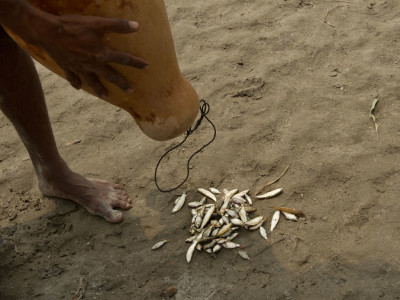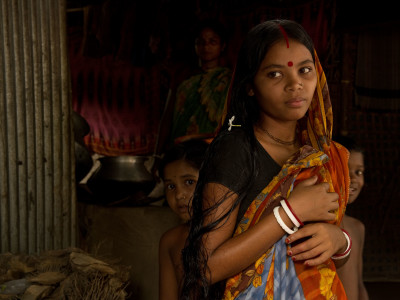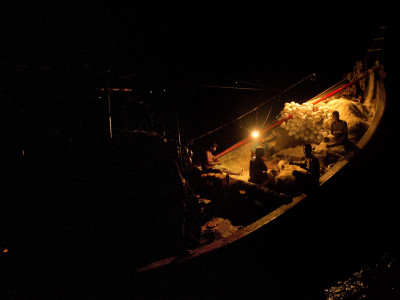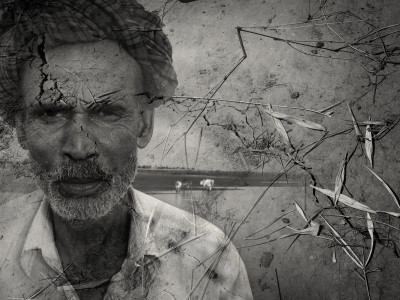“Do unto those downstream as you would have those upstream do unto you.”
https://multilingualparenting.com/book/nomyxexa/ ~WENDELL BERRY~
Clonazepam Without Prescription Kona Ram Das is 90 years old and still taut, sinewy, erect. He is running on empty. He had scraped a pot of plain rice clean at breakfast, and now his family of four has nothing for lunch or dinner. He squats on his haunches, hugging himself. If his god Gobind wills, they will eat rice, lentils, and potatoes tonight. Or they will go to bed hungry. Again.
His daspara, a generic name for a fishermen’s village, hugs the banks of the Teesta in Bangladesh. There are 24 dasparas in this section of the river; they house Kona Ram and his friend Sivaram Das and 26,000 other hungry fishermen and their families. The two had grown up alongside these waters, catching fish since they were five. As Kona Ram talks of that time his hands leap about in animated mimicry of the millions of fish that once were abundant.
Online Valium Prescription Then, the mighty Teesta, one of the largest tributaries of the Brahmaputra at this stage of its journey to the Bay of Bengal, was a force. Two kilometers across and coursing in three deep-braided channels, it sustained 21 million fishermen and farmers in its floodplains. It was formidable, Kona Ram recalled; it brimmed with life, with fish.
https://naturallakeland.com/talks/galomarij/ A few days later we would stand on the banks of the Teesta near Parulia, a point slightly upstream from Kona Ram’s village. Here, once upon a time, boats plied busily up and down into what is now India.
Buy Xanax 3Mg Online I would think of Kona Ram’s jumping fish that once were as I’d watch a four-year-old boy walking across the river, without ever getting his knee wet.
Order Zopiclone There is no water. No fish. No jobs for artisanal fishermen. They are all running on empty.
The little boy walking across the river is a vivid metaphor for the curse of the lower riparian state. When a river flows through multiple countries, the ones upstream have first pick of the waters. The ones closest to its mouth get the remnants or, often, nothing at all – because the middle riparian countries do unto the lower ones what the upper riparian does unto the middle.
The upstream states are the haves, and their intent is to monopolize, not to share. It can get very ugly, very vicious.
Today, many rivers do not reach their mouths. Dammed, diverted, channeled, and sucked dry upstream, they have nothing left in them for the deltas.
Treaties try to deal with this problem – but by definition, a treaty has to benefit all signatories. Why, however, would an upstream country treat to share its waters? What is there in it for them except the notional goodwill of the lower riparian states? Hence, upstream countries largely thumb their nose at any such treaties, or drag their feet on their implementation. They see the treaty as interfering with waters within their borders and set about building tall grey concrete dominoes of dams, with sluices to hold back the waters at will. Dams are wish-fulfilling djinns and canals are passports to food security for their people – or so the upper riparian state argues. And the devil take the hindmost.
In 1997, the United Nations Convention on the Law of the Non-Navigational Uses of International Watercourses (a mouthful, truncated to UNWC) was adopted. One clause, important but vaguely worded, sticks out:
The Convention “requires states to allocate water among them in a fair and reasonable manner, taking into account dependent populations and giving special regard to vital human needs. Any form of water utilization which might Buy Green Xanax Online significantly harm human health and safety would be a violation of the convention.”
What exactly does “significant harm” mean? In an excellent paper on the UN law, the Indian environmental lawyer Shawahiq Siddique questions this thus:
An Obligation Not to Cause Significant Harm: This principle is also a part of the theory of limited territorial sovereignty. According to this principle, no states in an international drainage basin are allowed to use the watercourses in their territory in such away thatwould cause significant harm to other basin states or to their environment, including harm to human health or safety, to the use of the waters for beneficial purposes or to the living organisms of the watercourse systems.
This principle is widely recognized by international water and environmental law, often expressed as sic utere tuo ut alienum non laedas. However, the question remains about the definition or extent of the word ‘significant’ and how to define ‘harm’ as a ‘significant harm’. This principle is incorporated in all modern international environmental and water treaties, conventions, agreements and declarations. It is now considered as part of the customary international law.
Given such ambiguity, here’s what happened: Bangladesh was a sponsor of the law. China voted against. India abstained. These are the three countries of the Brahmaputra basin – and the way they voted tells its own story. A convention needs 35 countries to vote in favor, for it to come into force. The UNWC couldn’t get the numbers.
In 2011, India and Bangladesh attempted a solution. Again. They have been attempting solutions since 1970, since the Teesta Barrage Project was conceived. In 2011, Prime Minister Man Mohan Singh went to Dhaka and signed a treaty whereby India would release 10,000 cubic meters/second (cusecs) of Teesta waters to Bangladesh. West Bengal Chief Minister Mamata Banerjee cried foul.
Banerjee’s state owns the Gazaldoba barrage. Upstream of that lies Sikkim, the birthplace of the Teesta. That state has already dammed the river in two places and plans more interruptions. West Bengal, lying downstream of Sikkim, is at risk of drastically reduced flows. How then, argued Bannerjee, could she consent to the release of 10,000 cusecs to Bangladesh?
Banerjee put her foot down, and the treaty was never ratified.
And this is what Modi is going to Dhaka to try once more. If all goes well, with Banerjee in tow.
],)
Meanwhile, Kona Ram, Sivaram Das, and their fellow fishermen gaze upstream in dismay.
They know only that two barrages have sucked their river dry. The Teesta Barrage Project, across the border in India, maneuvers whatever water it gets away from its course to green its fields. Not to be left behind, Bangladesh built the Teesta Barrage at Doani in 1998. It nudges the trickle India sends its way off course, to drench half a million hectares of farmland on the western bank of the Teesta.
There is nothing left in the river, no water to flow down towards Kona Ram and his 26,000 fellows. When the people of the dasparas speak of their lives, it is this way: Before Barrage and After Barrage.
“Before the barrages … 10-15 years ago … there was water, there were fish.”
We are in the courtyard of Kona Ram’s home. It is a clean-swept dwelling made of river mud, with a thatched roof. Some of his neighbors have built tin houses; others are entirely of thatch. All the houses are clean, sparse, and neat narrow gullies snake between them.
The women all have the traditional sindhoor in the parting of their wet hair. The red streaks set off their white and red bangles, a traditional sign of marriage. They boil rice on earthen stoves fed by bamboo. A pan of greens sits waiting to be cleaned, chopped, cooked.
They leave their work and cluster around us as we chat. Nobo Chandra Das is much younger than Kona Ram. “I caught fish, huge fish, this big …” he spreads his arms out wide. “We needed four people to pull it out. We got 2,850 Taka for it. Those were good days.”
That was eight years ago. Back then, they would carry such fish home in triumph regularly, and the whole village would feast.
No one has seen 20 kg fish around here recently. No one has seen much fish around here recently, of any size.
“There were options for livelihood then,” Das says. “There was more water, and there was fish in plenty. Now the water is a trickle and the fish are few, and we are forced to sell all that we catch – we need whatever taka we can get.
“We’re unlucky.”
My fixer was ribbing the wife of the oldest fisherman of the Daspara, asking if they pray to Gods and Goddesses for fish. But she was pragmatic and replied (video below), saying, “There is no water in the river, where will the fish come from?!”
Kona Ram’s son walks in on us. He’d been working all day as a daily wage earner in a nearby field. He had earned 100 taka (78 takas to a US dollar, approx). With it, he had bought 2.5 kgs of rice, some lentils, some potatoes.
“We invest everything we earn,” a young man, one of those crowded around us, pipes up. “Here,” he says, pointing to his stomach. The group greets the sally with loud laughter.
They are hungry. Their existence is tenuous; their future is bleak. But they laugh a lot, these people. They laugh at their own plight, and the mirth is genuine. Their attitude astounds me. They are poor, but every one of them in that daspara holds on to his dignity, and hers. They are poor, but they refuse to allow their lives to descend into squalor; they refuse to be beaten by circumstance.
They see not what is, but what they hope will be. They hope that they will eat that night, and they hope that India and Bangladesh will work something out, and they hope that their river will flow again.
],[https://www.peepli.org/wp-content/uploads/2015/05/paddy_bangles-1000x666.jpg,(medium)],[https://www.peepli.org/wp-content/uploads/2015/05/paddy_bangles.jpg,(large)])







